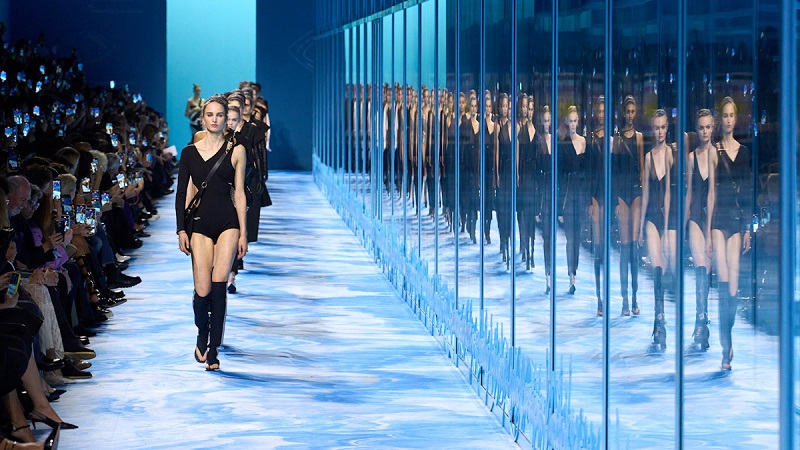
As the global luxury industry confronts its first major slowdown in over a decade, a quiet but powerful transformation is reshaping its foundations. According to the ‘True Luxury Global Consumer Insights 2025’ report by Boston Consulting Group (BCG), the tides of affluence are receding from the aspirational classes and consolidating among the ultra-rich, those for whom luxury is not indulgence, but a way of life.
The traditional model where millions of aspirational buyers buoyed the bottom rungs of luxury has begun to unravel. Once the industry’s growth engine, this segment is now pulling back amid rising costs and a growing sense that luxury has lost its allure, becoming “too noisy, too crowded, too industrialized.”
Yet, within this slowdown lies an extraordinary opportunity. While the middle retreats, the pinnacle rises. The elite ultra-high-net-worth individuals (UHNWIs) are emerging not only as resilient spenders but as cultural architects redefining the meaning of luxury itself.
A market in transition
Over the past decade, aspirational consumers, often making their first forays into luxury through handbags, watches, or accessories, drove up to 70 per cent of luxury sales. However, the BCG report reveals a sharp reduction in this group’s influence. Their market share has declined by nearly 15 percentage points, largely due to macroeconomic pressures and shifting perceptions.
In contrast, top-tier consumers, the 0.1 per cent elite are expanding their footprint. This class now makes up 23 per cent of global luxury spending, a figure that is only expected to grow. These aren’t casual consumers. They are deeply invested patrons, spending on average €355,000 annually on luxury, and as much as €500,000 when high-end cars, wellness, and other lifestyle categories are included.
For them, luxury isn’t about accumulation. It’s about orchestration of life a symphony of experiences, aesthetics, and personalized enrichment.
Redefining luxury, from ownership to experience
The evolving preferences of UHNWIs signal a deeper cultural shift: luxury is no longer about what one owns, but how one lives. BCG’s data points to a significant rise in spending on health-as-wealth categories such as wellness, beauty, and interior design. These sectors are ready for a 10 per cent spending increase over the next 18 months, reflecting a move away from status symbols toward investments in longevity, comfort, and self-expression. This is further illustrated by the spending habits of top-tier clients.
Table: Global spending habits of top-tier clients
|
Category |
Share of top-tier client spend (approx.) |
Potential for India's UHNWIs |
|
Cars (Ultra-luxury) |
52% (highly engaging globally) |
High demand for limited editions and bespoke models. |
|
Design & Fine Arts |
43% (globally) |
Growing interest in curated art and designer homes. |
|
Wellness & Beauty |
35% (globally) |
Rapidly expanding segment for high-end spas, anti-aging, and exclusive beauty products. |
|
Personal Luxury (total) |
34% (Jewelry & Watches globally) |
Strong existing market, shifting towards bespoke and heritage pieces. |
|
Private Memberships |
28% (globally) |
Increasing demand for exclusive clubs and concierge services. |
|
Wine & Spirits |
38% (globally) |
Premiumization of consumption and demand for rare vintages. |
Note: These illustrative data is relevant to Indian UHNWIs
Among these, All Category Spenders, a niche but potent segment, comprise 17 per cent of top-tier clients, with an average annual spend of €580,000, across categories as diverse as automobiles (70 per cent), luxury travel and dining (16 per cent), and high-end personal luxury (8 per cent).
India, the emerging luxury powerhouse
While traditional markets like Europe, the US, and China continue to anchor luxury demand, the BCG report spotlights India as a key frontier for future growth. With a projected CAGR of 11–15 per cent in the HNW and UHNWI population by 2034, India is undergoing an unprecedented shift in wealth creation. By 2030, the country is expected to have a significant share of the 1.4 million HNWIs globally, part of a group collectively managing €100 trillion in investable assets.
This demography is young, digitally savvy, and increasingly global in taste but firmly Indian in cultural pride. As affluence replaces mere aspiration, luxury brands are being urged to move beyond token localization. The future, BCG suggests, belongs to those who embed craftsmanship, personalization, and intimacy into their India strategy.
A strategic imperative for brands
The BCG report doesn’t mince words: luxury must find its way back home. As many brands increased their reach to capture aspirational markets, they diluted their DNA compromising on exclusivity, rushing collections, and losing sight of their core clientele. Now, with aspirational buyers retrenching, the cracks are showing.
To thrive in this new scenario, brands must prioritize:
Connection: Delivering meaningful, human-led relationships that transcend transactions.
Intimacy: Curating hyper-personalized, exclusive experiences.
Excellence: Upholding the highest standards of quality and craftsmanship.
Recognition: Honoring the unique preferences and loyalty of elite clients.
The report also notes that many high-value clients still find luxury offerings too generic, a symptom of over-industrialization. BCG urges brands to reorient towards high-touch service, vertically integrated quality, and GenAI-enhanced personalization but never at the expense of the human connection.
Luxury’s rebirth at the top
In an industry long dominated by scale and inclusivity, the pendulum is swinging back toward intimacy and excellence. The ultra-wealthy are not just surviving this market shift they are leading it. Their desires are more discerning, their loyalty harder to earn, and their expectations higher than ever before.
For luxury brands, this is not a time to broaden the tent. It’s a moment to raise the standard to deepen roots with their most committed patrons and build a future anchored in timeless values. As the BCG report concludes: "The future of luxury lies in exclusivity, not accessibility. In personalization, not proliferation. In craftsmanship, not commodification." And perhaps, in this renewed sense of purpose, lies the industry’s next golden age.











